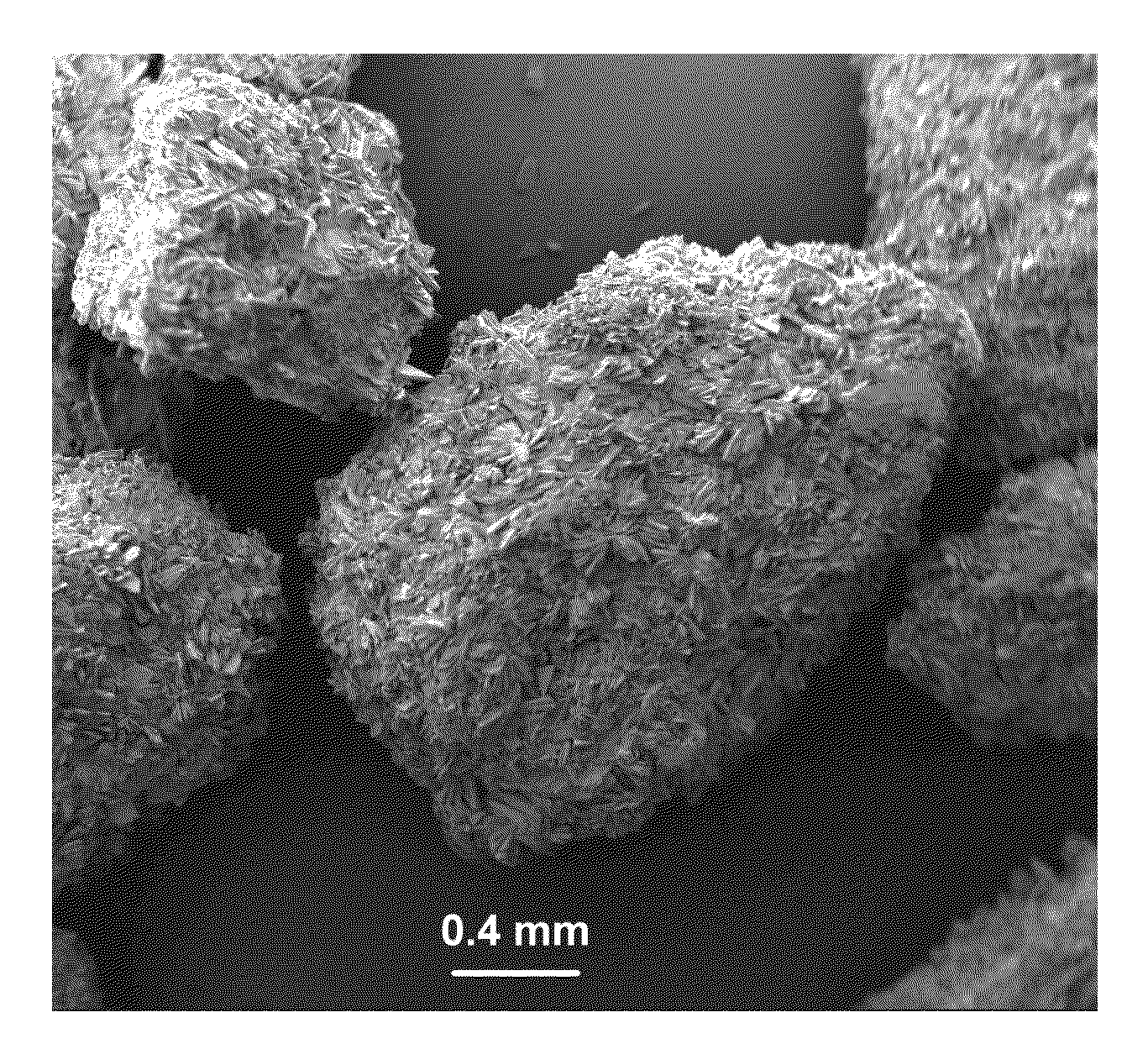Preparation of brushite and octacalcium phosphate granules
a technology of octacalcium phosphate and granules, which is applied in the field of preparation of load-bearing granules, can solve the problems of reducing the ability of bone remodeling processes of octacalcium phosphate granules to take part in brush e granules from calcium carbonateimarble granules, unable to fully react with the reaction, and unable to meet the requirements of treatmen
- Summary
- Abstract
- Description
- Claims
- Application Information
AI Technical Summary
Benefits of technology
Problems solved by technology
Method used
Image
Examples
working examples
Working Example-1
Preparation of Brushite Granules
[0027]10 grams of NH4H2PO4 is dissolved in 50 mL of doubly distilled water. The pH of this solution is 4. The solution was prepared in a 100 mL-capacity glass media bottle. 2 grams of calcium carbonate / marble granules were placed into the above solution. The solution and the granules in it were not stirred and kept statically at room temperature for about 24 h. At the end of this period the filtered granules were washed with 1 liter of distilled water and dried at 37° C. An upscaling of the phosphate solution volume to 1000 mL and the starting granule weight to 40 grams worked equally well, and the brushite granules obtained from both runs were virtually indistinguishable from one another by electron microscopy, X-ray diffraction and Fourier-transform infrared spectroscopy.
[0028]In the above preparation recipe, 10 grams of NH4H2PO4 (equal to 0.0869 moles of H2PO4− in 50 mL distilled water can be replaced with[0029](i) 10.426 grams of...
working example-2
Preparation of Octacalcium Phosphate Granules
[0032]The solutions shown in Table 1, which were always prepared on a 1000 mL total volume basis, can all be equally well used in producing octacalcium phosphate granules, by starting with the brushite granules synthesized according to the conditions / parameters of Example-1. The solutions shown in Table 1 were prepared by using NaCl. KCl, CaCl2.2H2O, MgCl2.6H2O, Na2HPO4 (in Solutions 1 and 2), NaH2PO4.2H2O (in Solution 3), and Tris; unless otherwise noted.
TABLE 1Solutions used in OCP granule productionConc. (mM)Na+K+Mg2+Ca2+HPO42−H2PO4−HCO3−Cl−Tris1M HClpHSolution-1 1465—3.3332——154 6.77 g55 mL7.4Solution-21455—53——154 6.77 g55 mL7.4Solution-3 12750.81.8—0.94492——7.5
[0033]Solution-1 was prepared by adding, one by one, NaCl (8.299 g), KCl (0.373 g), CaCl2.2H2O (0.490 g), Na2HPO4 (0,284 g) and Tris (6.770 g) into 1000 mL of doubly distilled water in a 1000 mL-capacity glass media bottle at room temperature. 55 of 1 M HCl solution was added ...
working example-3
Preparation of Biphasic Brushite-Octaca Phosphate Granules
[0043]Since the brushite (DCPD) and octacalcium phosphate (OCR) granules follow in the entire process the size and shape range (or distribution) of the starting calcium carbonate / marble granules and since they do not change their sizes and physical shapes during the process, it will be extremely easy to prepare biphasic, physical mixtures of the two kinds of granules, i.e., by separately weighing the DCPD and OCP granules and than by blending them together. It is thus possible to prepare biphasic mixtures of DCPD and OCR granules, for the first time, according to the below scheme:[0044]10 wt % DCPD—90 wt % OCP,[0045]20 wt % DCPD—80 wt % OCP,[0046]30 wt % DCPD—70 wt % OCP,[0047]40 wt % DCPD—60 wt % OCP[0048]50 wt % DCPD—50 wt % OCP,[0049]60 wt % DCPD—40 wt % OCP,[0050]70 wt % DCPD—30 wt % OCP,[0051]80 wt % DCPD—20 wt % OCP,[0052]90 wt % DCPD—10 wt % OCP.
[0053]It must be noted here that the log KSP of DCPD is −6.60, whereas tha...
PUM
| Property | Measurement | Unit |
|---|---|---|
| sizes | aaaaa | aaaaa |
| Ca/P molar ratio | aaaaa | aaaaa |
| Ca/P molar ratio | aaaaa | aaaaa |
Abstract
Description
Claims
Application Information
 Login to View More
Login to View More - R&D
- Intellectual Property
- Life Sciences
- Materials
- Tech Scout
- Unparalleled Data Quality
- Higher Quality Content
- 60% Fewer Hallucinations
Browse by: Latest US Patents, China's latest patents, Technical Efficacy Thesaurus, Application Domain, Technology Topic, Popular Technical Reports.
© 2025 PatSnap. All rights reserved.Legal|Privacy policy|Modern Slavery Act Transparency Statement|Sitemap|About US| Contact US: help@patsnap.com



